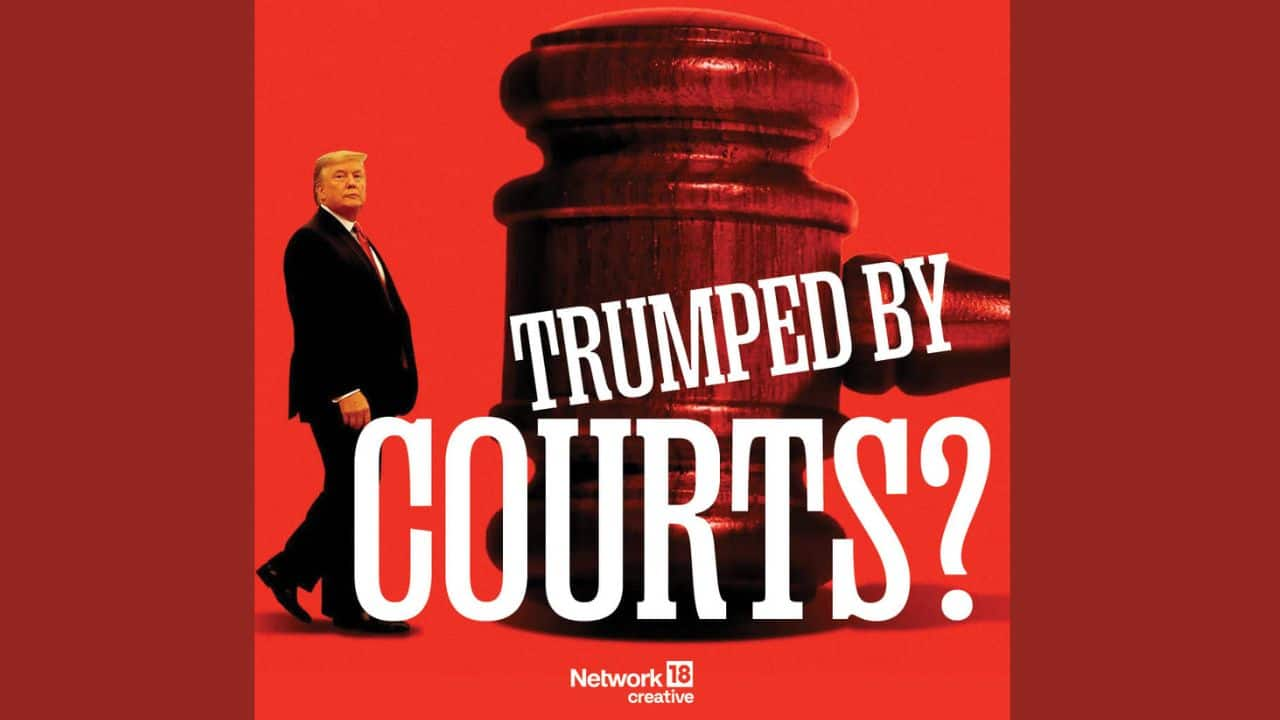
US President Donald Trump's attempts to transform American life and government with executive orders have faced obstacles in federal courts, where judges have temporarily halted several key policies as they review legal challenges. (Image: News18 creative)
Former US President Donald Trump issued a series of executive orders impacting immigration, the economy, and other areas. Here’s an overview of the current status of these orders, including those undergoing legal challenges in the courts. (Image: News18 creative)
An executive order is an official directive issued by the US President to manage federal government activities. It doesn’t need Congress's approval, and Congress cannot directly overturn it. However, Congress can limit its effectiveness by enacting laws that cut funding or impose legal obstacles. Only the current President can revoke an executive order by issuing a new one. (Image: News18 creative)
Several policies, such as those related to transgender rights and federal funding for research institutions, have been halted or put on hold by judges as they review ongoing legal challenges. (Image: News18 creative)
On his first day in office, Trump signed an executive order to end birthright citizenship for children born to parents who are in the US illegally. Within a week, at least five lawsuits were filed against the order. Opponents argue that birthright citizenship is guaranteed by the US Constitution, and that Trump does not have the legal authority to revoke it. (Image: News18 creative)
Two major unions representing US government employees have filed a lawsuit to halt President Donald Trump’s attempt to reclassify up to 50,000 federal workers, making it easier to dismiss them. The American Federation of Government Employees and the American Federation of State, County and Municipal Employees argued that Trump’s January 20 executive order unlawfully sought to prevent a Biden administration rule that protects federal workers from losing their job protections. (Image: News18 creative)
Trump, on his first day of second term, signed an executive order to establish the Department of Government Efficiency (DOGE). A lawsuit questioning its legality was filed the same day. By February 10, at least three lawsuits had been filed against DOGE in US courts. (Image: News18 creative)
Soon after taking office, Trump signed executive orders ending DEIA (diversity, equity, inclusion, and accessibility) programs at government agencies. The order was challenged in the District Court of Maryland, with the lawsuit claiming that it suppresses free speech and that Trump overstepped his constitutional authority by issuing it. (Image: News18 creative)
On January 28, just hours after Trump signed an order freezing hundreds of billions in federal grants and loans, a coalition of organizations representing grant recipients filed a lawsuit. In response, a judge temporarily blocked the order, and soon after, the White House rescinded the memo that had authorized the freeze. (Image: News18 creative)
Trump suspended the right for undocumented migrants to seek asylum. Prior to the order, migrants could arrive at the US border and legally request asylum. A lawsuit has been filed, requesting the court to block the Trump administration from enforcing the ban. (Image: News18 creative)
Trump signed an executive order that blocked federal funds for gender-affirming care and required the transfer of transgender women in federal custody to men's facilities. A federal judge later halted its enforcement. Additional lawsuits challenge policies that ban transgender military service, limit gender-transition care for minors, and prevent gender marker changes on US passports. (Image: News18 creative)
Discover the latest Business News, Sensex, and Nifty updates. Obtain Personal Finance insights, tax queries, and expert opinions on Moneycontrol or download the Moneycontrol App to stay updated!









